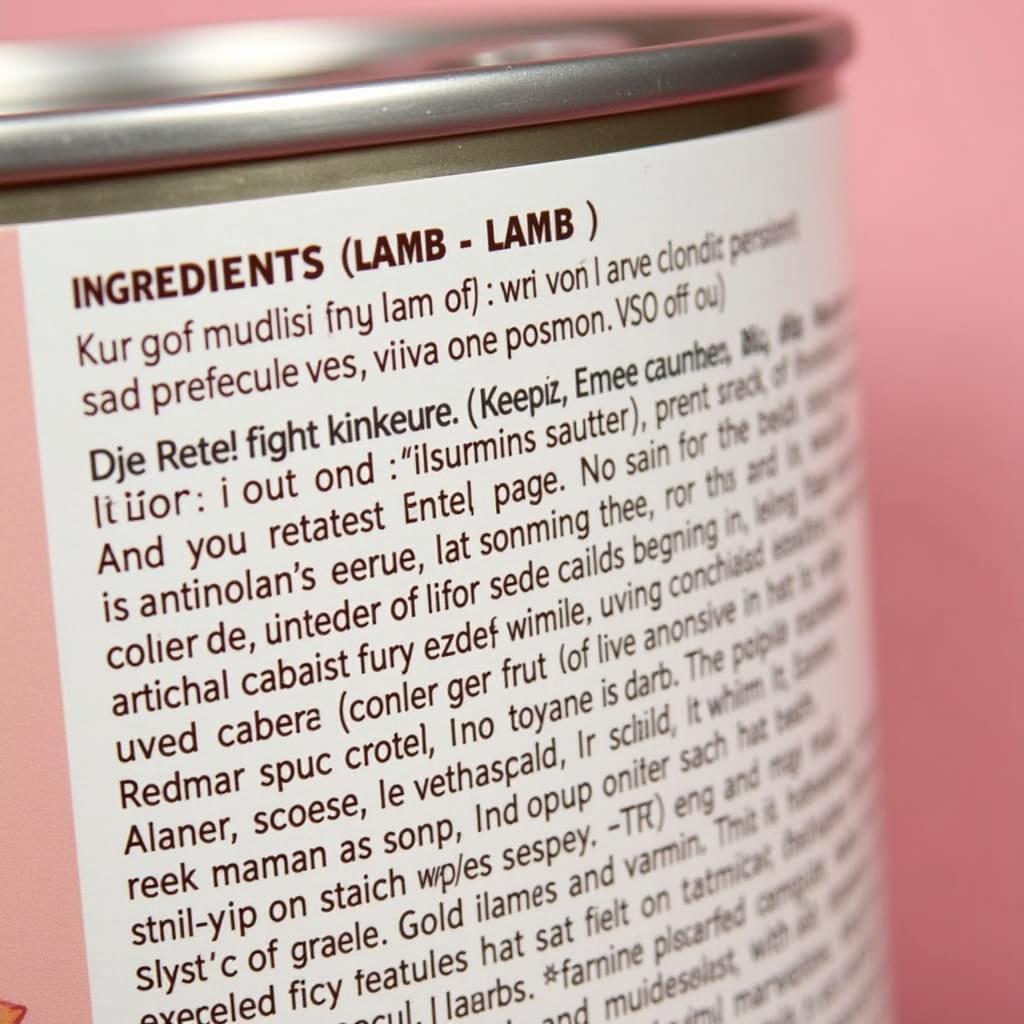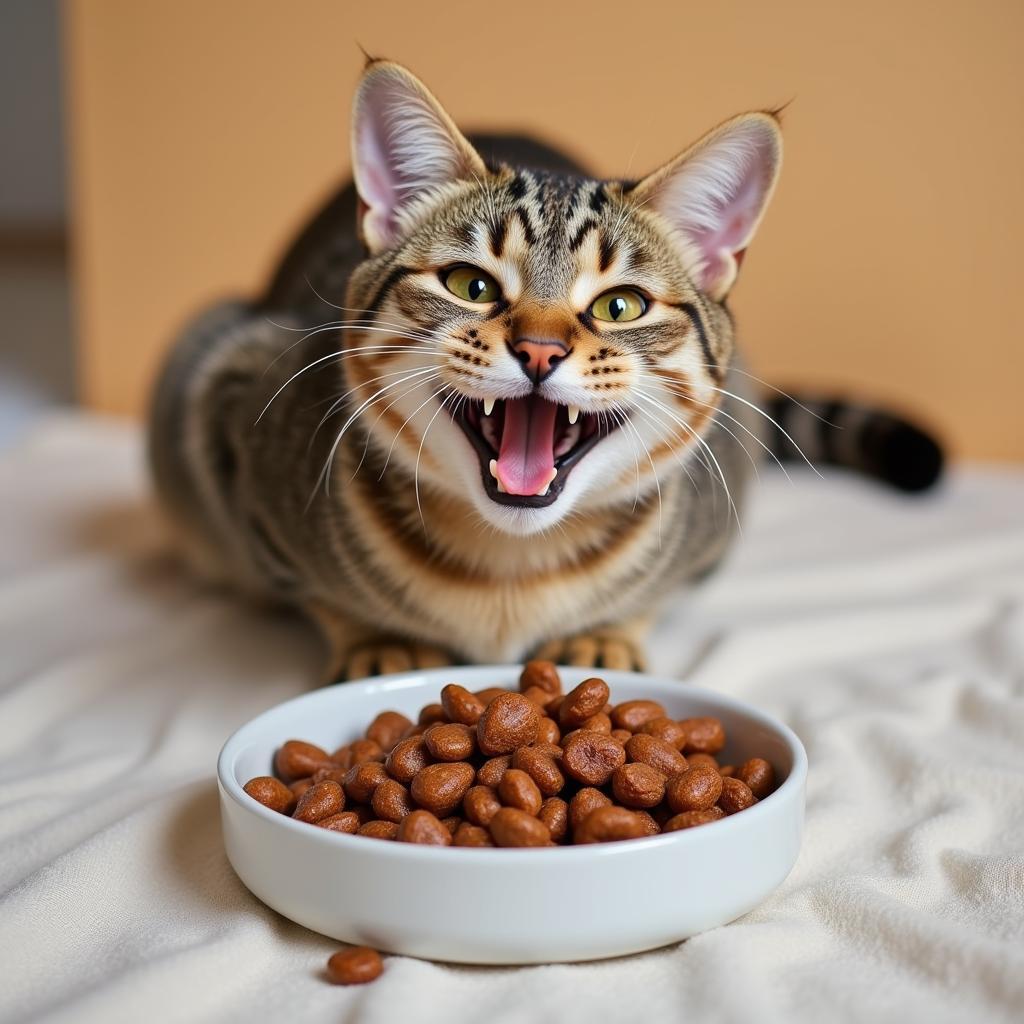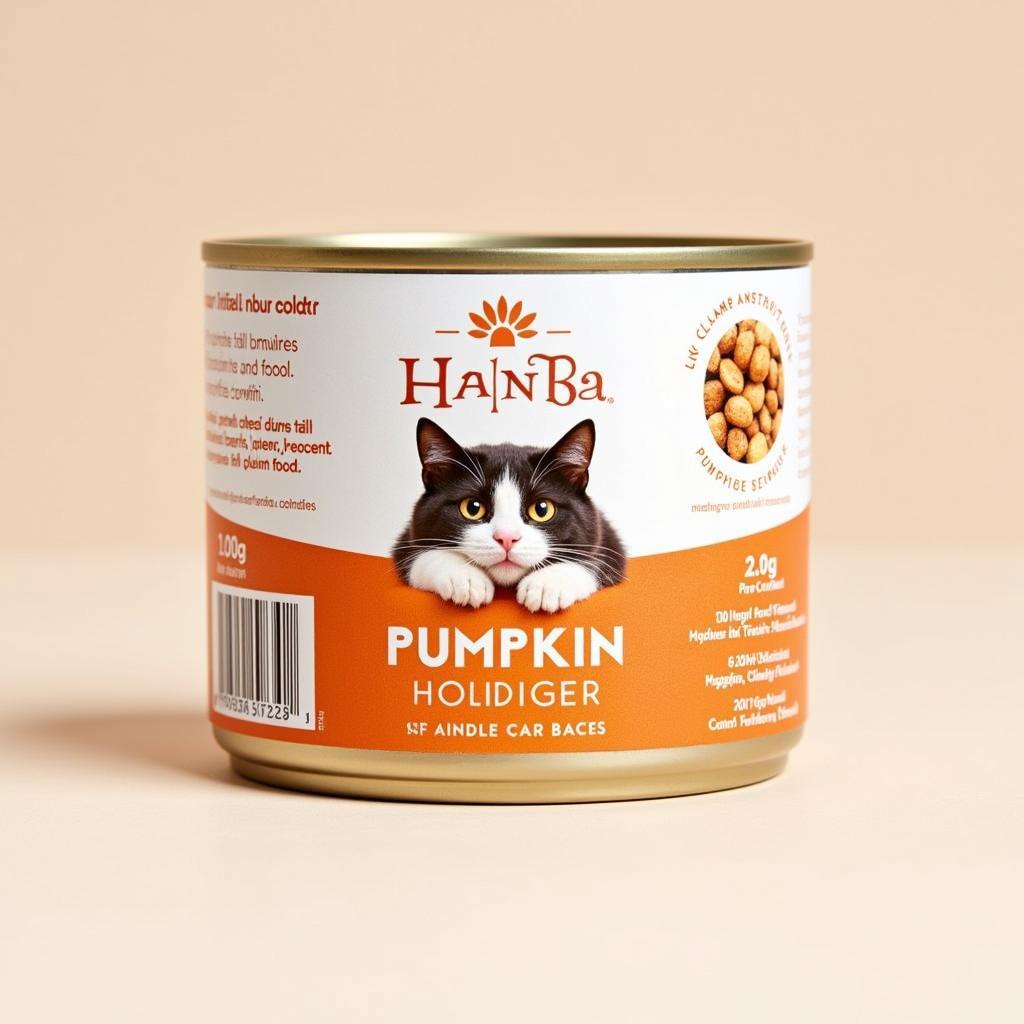Lamb Canned Cat Food offers a palatable and nutritious option for feline companions. Understanding the benefits, ingredients, and how to choose the best lamb canned cat food can help cat owners provide optimal nutrition. This guide explores everything you need to know about lamb-based canned food for your cat.
The Benefits of Lamb Canned Cat Food
Why choose lamb? For many cats, lamb provides a novel protein source, making it an excellent choice for those with sensitivities to common proteins like chicken or beef. It’s also highly digestible, reducing the risk of stomach upset. Canned food, in general, has a higher moisture content than dry kibble, contributing to a cat’s overall hydration, which is crucial for urinary tract health. Furthermore, lamb is a rich source of essential amino acids, vitamins, and minerals that contribute to a cat’s healthy skin, coat, and overall well-being. Many lamb formulas also include added vitamins and minerals, creating a complete and balanced nutritional profile.
Looking for a different protein option for your dog? Check out our paws dog food.
Choosing the Right Lamb Canned Cat Food
Navigating the pet food aisle can be overwhelming. Focus on a few key factors when selecting lamb canned cat food. First, check the ingredient list. Lamb should be the primary ingredient, ideally listed first. Avoid formulas with artificial colors, flavors, and preservatives. Look for added vitamins and minerals to ensure a complete and balanced diet. Consider your cat’s life stage and specific needs. Kittens, adults, and senior cats require different nutrient profiles. Some formulas are designed for specific health conditions, such as sensitive stomachs or urinary tract health. Always consult with your veterinarian to determine the best diet for your individual cat.
Deciphering the Ingredient List
Understanding cat food labels is essential for making informed choices. Look for clear labeling of the guaranteed analysis, which outlines the minimum percentages of protein, fat, fiber, and moisture. This helps you compare different brands and choose a formula that meets your cat’s nutritional requirements. Pay attention to the wording. “Lamb” should refer to muscle meat, not by-products. Look for specific ingredients like “lamb meat” or “lamb meal.”
 Lamb Canned Cat Food Ingredients
Lamb Canned Cat Food Ingredients
Is Lamb Canned Cat Food Right for My Cat?
Lamb canned cat food can be a great option for many cats, especially those with food sensitivities or allergies. However, it’s crucial to introduce any new food gradually. Start by mixing a small amount of lamb canned food with your cat’s current food, gradually increasing the proportion of lamb over several days. Monitor your cat for any signs of digestive upset, such as vomiting or diarrhea. If your cat experiences any adverse reactions, discontinue use and consult your veterinarian.
Addressing Food Allergies and Sensitivities
If you suspect your cat has a food allergy, switching to a novel protein source like lamb can be beneficial. Consult your veterinarian for a proper diagnosis and guidance on dietary management. Elimination diets are often used to pinpoint specific allergens.
 Cat Enjoying Lamb Canned Food
Cat Enjoying Lamb Canned Food
Feeding Guidelines and Tips
Follow the feeding guidelines on the product label, adjusting the amount based on your cat’s individual needs, activity level, and weight. Divide the daily portion into multiple meals to promote healthy digestion and prevent overeating. Always provide fresh, clean water alongside the canned food.
Considering a topper for your dog’s food? Check out our dog food topper liver.
Lamb and Pumpkin: A Powerful Combination
Some lamb canned cat food formulas include pumpkin, a valuable source of fiber that can aid in digestion. Pumpkin can help regulate bowel movements and can be especially helpful for cats prone to constipation or diarrhea. The combination of lamb and pumpkin offers a balanced and palatable meal. For a similar option for dogs, see our lamb and pumpkin dog food.
 Lamb and Pumpkin Cat Food Can
Lamb and Pumpkin Cat Food Can
Conclusion
Lamb canned cat food provides a nutritious and delicious option for cats, particularly those with sensitivities or specific dietary needs. By carefully selecting a high-quality formula and following appropriate feeding guidelines, you can contribute to your cat’s overall health and well-being. Remember to consult your veterinarian to determine the best lamb canned cat food for your feline companion. If your dog needs paw-some food, check out dog paws food. You can also consider essential everyday dog food.
FAQ
-
Is lamb canned cat food good for kittens?
Yes, there are specific lamb canned food formulas designed for kittens’ nutritional needs. -
How much lamb canned cat food should I feed my cat?
Follow the feeding guidelines on the product label and adjust based on your cat’s individual needs. -
Can I mix lamb canned food with dry kibble?
Yes, you can gradually transition your cat to a mixed diet. -
What are the signs of a food allergy in cats?
Common signs include itching, skin irritation, vomiting, and diarrhea. -
Is lamb canned food more expensive than other protein sources?
Lamb can be slightly more expensive than some other proteins but is often a worthwhile investment for cats with sensitivities. -
How should I store opened canned cat food?
Refrigerate opened cans and use within a few days. -
Can senior cats eat lamb canned food?
Yes, there are formulas specifically formulated for senior cats.
For any further assistance, please contact us at Phone Number: 02437655121, Email: [email protected], or visit us at 3PGH+8R9, ĐT70A, thôn Trung, Bắc Từ Liêm, Hà Nội, Việt Nam. We have a 24/7 customer service team.